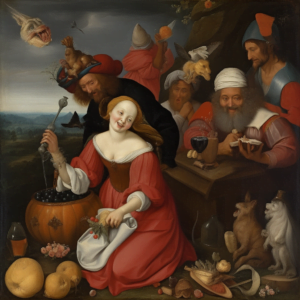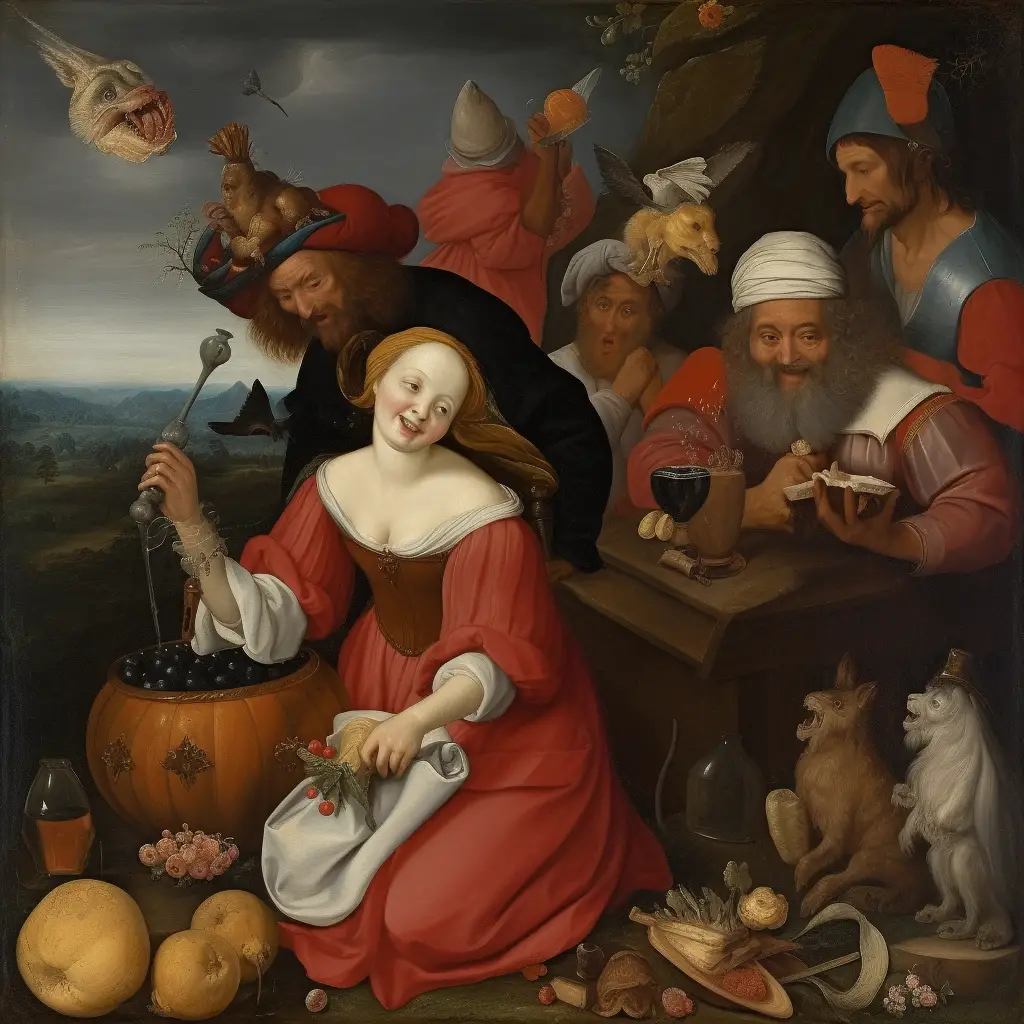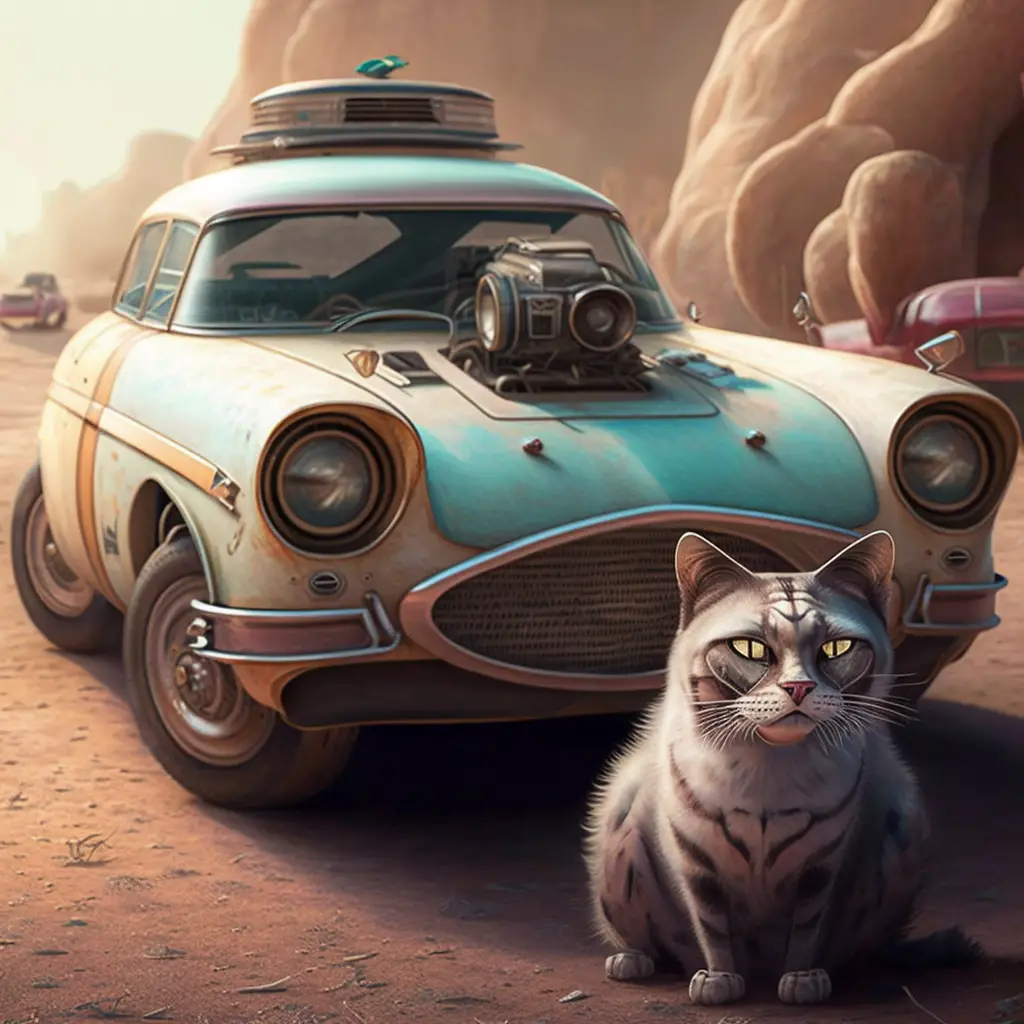
An allegory is a creative masquerade, where characters, events, or settings represent deeper meanings, revealing hidden truths and insights through a symbolic tale
Let’s dive into the captivating world of allegories. You might have come across the well-known tale of the little engine that could. This story is about a small train engine that conquers a challenging hill by believing in itself. Besides being an entertaining tale, it holds a deeper lesson: believe in yourself and keep trying. This is a perfect example of an allegory—a tale with a concealed meaning.
What is an Allegory?
An allegory is a narrative that conveys more than just the events it describes. Instead of explicitly discussing intricate or abstract concepts, writers craft allegories to help readers grasp these ideas through fascinating stories. Allegories are like hidden treasures—there’s a secret meaning waiting to be discovered!
The Magic of Allegories: How They Work
Allegories function by employing symbols and characters to symbolize more profound implications. When we engage with an allegory, we concentrate on the narrative while also uncovering the underlying message. It’s like cracking a secret code! Some allegories tackle sensitive subjects, allowing authors to express their opinions in a more discreet manner.
The Many Flavors of Allegories
There are various types of allegories based on their origins or the techniques they employ:
- Origin-based allegories:
- Biblical: Tales from the Bible or inspired by biblical teachings, often about the battle between good and evil.
- Classical: Narratives from ancient Greece and Rome, such as the stories of Hercules.
- Contemporary: Stories addressing present-day concerns, like Ray Bradbury’s Fahrenheit 451.
- Technique-based allegories:
- Personification: Narratives where characters transparently embody ideas or notions.
- Symbolic: Tales where characters have their own story but also signify something more profound.
Allegories in the Spotlight
Here are some renowned allegories you might find intriguing:
- Gulliver’s Travels by Jonathan Swift: This book tells the story of Gulliver’s adventures in various fantastical lands. However, it also satirizes human nature and society.
- The Parables of Jesus: These short stories, like the Parable of the Good Samaritan, teach essential moral and spiritual lessons.
- The Allegory of the Ship by Plato: This philosophical allegory explores the idea of leadership and the responsibilities of rulers.
Occasionally, readers interpret allegorical meanings in stories even if the author did not intend them. For example, some argue that C. S. Lewis’s The Chronicles of Narnia is an allegory for Christianity, but Lewis himself has disputed this claim.
Frequently Asked Questions
Q: What exactly is an allegory?
A: An allegory is a story that carries a hidden, deeper message, making complex or abstract concepts more accessible.
Q: How do allegories achieve their purpose?
A: Allegories use symbols and characters to represent deeper meanings, enabling readers to decipher the concealed message more easily.
Q: Can you categorize the different types of allegories?
A: There are two primary categories: origin-based (biblical, classical, or contemporary) and technique-based (personification or symbolic).
The Art of Allegory
Allegories are like puzzles, inviting readers to uncover the hidden meanings within. By combining engaging stories with thought-provoking themes and symbolism, writers can create powerful and memorable tales that resonate with audiences long after the last page is turned. With a little creativity and imagination, anyone can craft their own allegorical masterpiece, leaving readers enchanted, enlightened, and eager for more.
If you’re thirsty for more writing knowledge, head over here to learn all 74 literary devices.





